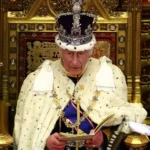The two-week-long anti-quota protests in Bangladesh have turned violent after groups linked to the ruling party attacked student protesters in the capital, Dhaka.
More than 400 people were injured on Monday and Tuesday during attacks on protesters who are against the government job quota system amid rising unemployment in the South Asian nation.
The protests began on July 1 after the High Court reinstated the job quota that reserves one-third of civil service posts for children of fighters who participated in the country’s liberation movement in 1971.
So what triggered the current protests and why is the quota system facing opposition?
Who is protesting against job quotas in Bangladesh?
Students from government and private universities across Bangladesh are demanding reform in the conventional job quota system, under which more than half of much sought-after government jobs are reserved.
The protesters said they are not aligned with any political group and they want a merit-based system that is fair to all.
Fahim Faruki, a protester and third-year international relations student at Dhaka University, said the students organised the protests through a Facebook group and were not backed by any political organisation.
The protest movement has come to be known as the Students Against Discrimination movement. Thousands of students from Dhaka University in the capital as well as Chittagong University have staged sit-ins against the quota system.

What triggered the recent protests?
On June 5, the High Court ordered the reinstatement of the 30 percent quota for children of freedom fighters, deeming the 2018 abolition of quotas illegal. Prime Minister Sheikh Hasina of the Awami League had abolished the quota system after massive protests.
What is the quota system in Bangladesh?
In 1972, the country’s founding father, Sheikh Mujibur Rehman, introduced a quota system, reserving a percentage of government jobs for children and grandchildren of people who fought in the 1971 war of independence from Pakistan.
What do the anti-quota protesters want?
- 30 percent for the children and grandchildren of freedom fighters
- 10 percent for women
- 10 percent “zila quota” for “backward” districts
- 5 percent for ethnic minorities
- 1 percent for people with physical disabilities
- Under the system, 44 percent of first- and second-class government jobs are “merit” based.
On Thursday, student protesters from the public Comilla University, southeast of Dhaka, clashed with police, who opened fire, local media reported. Twenty people, including students and three policemen, were injured as a result, local media reported.
Ruling party leaders and ministers have tried to paint the protesters as anti-nationals and against the government after Hasina, who has been in power since 2009, referred to them as “Razakars”.
In Bangladesh, Razakar is an offensive term that refers to those who betrayed Bangladesh in the 1971 war by collaborating with Pakistan.
“Why do they have so much resentment towards freedom fighters? If the grandchildren of the freedom fighters don’t get quota benefits, should the grandchildren of Razakars get the benefit?” she asked at a news conference on Sunday.
In response, protesters chanted the slogan, “Who are you? Who am I? Razakar, Razakar,” during a protest at Dhaka University.
`









